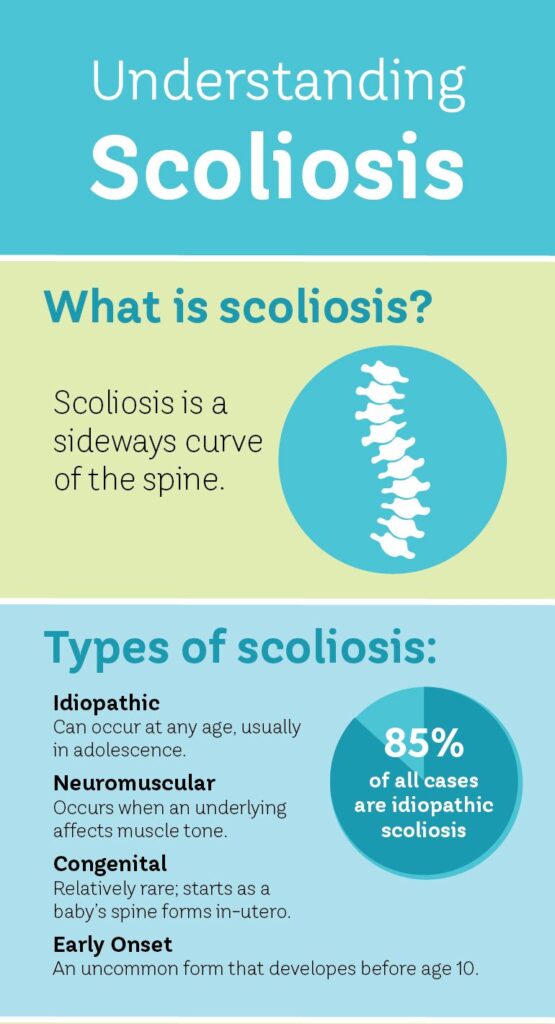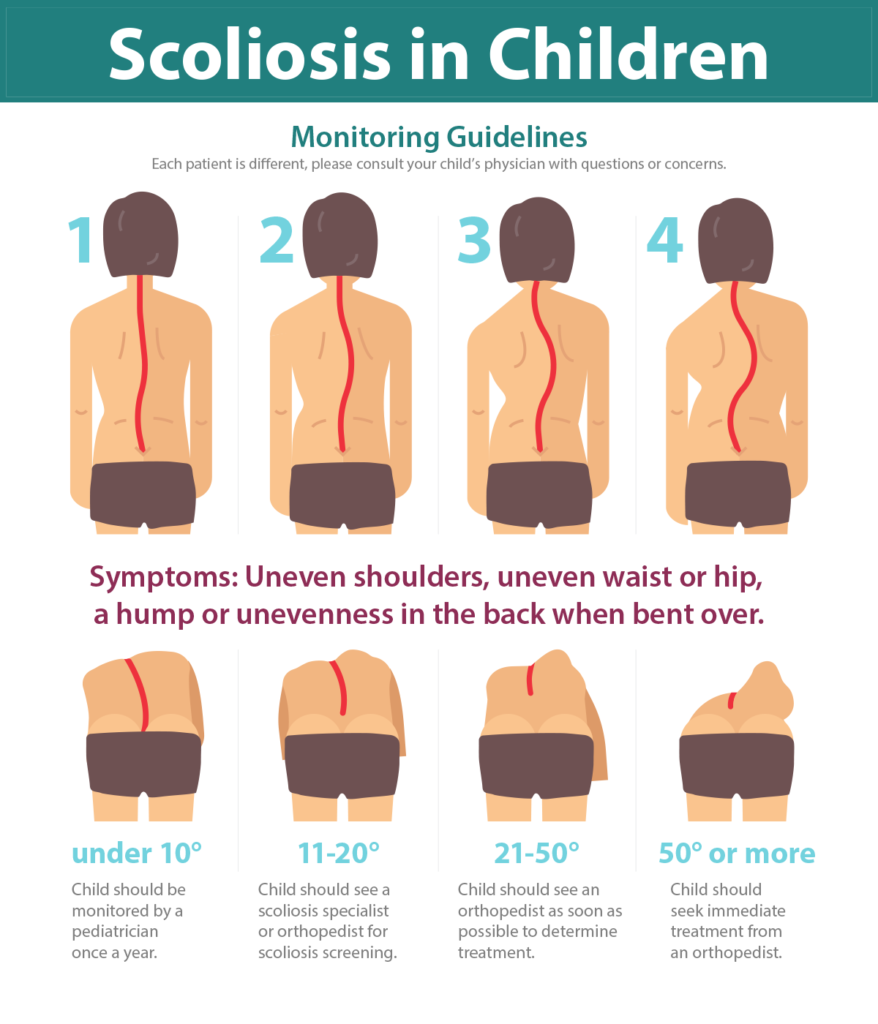By Samuel Pimping
Misconceptions about medical science are common. But among the countless illnesses and disorders that exist in the world, scoliosis is most likely one of the most burdened by old wives’ tales in the Philippines.
Scoliosis is a three-dimensional deformity or a sideways curvature with a Cobb angle of ten degrees or higher in the spine. Sounds painful? Don’t worry! This is just a fancy way of saying that your back is curvier than normal.
From constant back-breaking pain to prohibition of pregnancy, we dispel a few twisted fallacies this Scoliosis Awareness Month that might get you bent out of shape.
Myths that throw your back out of whack
At some point in elementary school, you might have heard your parents worry over your hefty backpack. “Ba’t andami mong bitbit? Magkaka-scoliosis ka niyan!” or something along the lines of, “Ang dami naming mga librong pinapadala sa inyo—masisira likod mo!”
Fortunately, carrying heavy stuff does not cause scoliosis. There have never been any cases in which scoliosis was caused by frequently being weighed down by huge backpacks. Yes, they are nonetheless bad for your children, but most of them grow without the disorder despite the daily ordeal.
Scoliosis is idiopathic. To say that a condition is idiopathic means that its exact cause is unknown—that it seems to have come out of nowhere. What is sure, however, are some of the things that do not cause it. A few of the falsely accused culprits include backpacks, bad posture, a poor diet, and strenuous exercise such as weightlifting.

Since the disorder is idiopathic, this means that it is not preventable. Straightening your posture, eating healthy, taking up swimming, or exercising only with light weights and perfect form are not going to fix or prevent scoliosis. But of course, this is no reason to just do away with habits that improve your overall health regardless!
It is more proper to say that scoliosis may have multiple causes that cannot be pinpointed. For instance, genetics could be one of them. There is strong evidence that it runs in families as the children of a parent with scoliosis are at greater risk; 9% and 29% of their sons and daughters, respectively, are more likely to develop the condition.
Note that women living with the condition can still get pregnant as it does not affect fertility, chances of a miscarriage, and the baby’s health in any way whatsoever.
Sometimes, someone might panic when they think that a curved spine might push into other organs and cause intense damage. This is a particularly frightening misconception for parents and their growing child. It is a good thing that our body is more adjustable than you think! Organs get safely adjusted along with the twisting of the spine away from it.
For some reason, there is also a myth saying that those who had surgery for scoliosis cannot travel afterwards. This is not true. Once the patient has healed and the discomfort has substantially subsided, there is no reason to waste away bedridden at home forever.
Fun fact: in the Philippines, Scoliosis Awareness Month was only made official in 2018 under Proclamation No. 620! This was already being celebrated globally per year every June. Public and private corporations and government units have been encouraged to advocate for it in cooperation with the Department of Health, but like many months dedicated to awareness of a specific illness or disorder, much more needs to be done.
As over 4% of the global population is affected by scoliosis, raising awareness about a disorder troubled with misconception is a pressing matter.
Busting your back while living with scoliosis
Another misleading belief is the assumed severity of scoliosis. When we hear that someone we have never seen has been diagnosed with the disorder, we generally assume the worst: living with back braces, needing surgical operations to fix the spine, suffering from constant pain and weakness, and being unable to walk naturally upright by themselves. Indeed, human imagination usually takes things to the extreme.
This initial imagery is reserved only for the most severe cases, such as those with a Cobb angle greater than 50 degrees. For the vast majority of those diagnosed with scoliosis, they never need surgery. They walk the streets without a problem, and most of the time, you would never even notice they have the disorder unless they bring it up.
There are even highly competitive athletes who live with minor forms of scoliosis. For most, it is not a disorder that bars them from becoming active adventurers and living their lives to the fullest—to the point that it does not even seem to bother them. Those who have had surgery can still be just as active upon full recovery.
Scoliosis is typically diagnosed during late childhood or early adolescence. This is because the primary signs and symptoms such as uneven shoulders or hips, spinal deformity, asymmetrical posture, and back pain or discomfort are usually observed during periods of growth or puberty.

As it has been associated with growth, it was previously thought that the disorder would not get worse in fully grown adults. This is now known to be false. When we get older, ligaments get weaker, and the spine becomes more unstable—making the abnormal curvature even more pronounced.
Scoliosis can therefore be progressive in adults. Progressive means that the condition gets worse overtime. This is only true for some instances, and severe cases with greater curvatures are more likely to require substantial medical support such as back braces or operative procedures.
While it is possible that it can progress, fully grown adults usually do not see significant changes in the curvature of their spine, especially when the ligaments are strengthened and made healthier through exercise and chiropractic care.
Dealing with getting bent out of shape
So, how do you correct scoliosis? The answer is not just surgery. This invasive procedure is reserved for extreme cases (Cobb angle of 50 degrees and higher). ScoliBrace and scoliosis-specific exercises are effective, non-invasive options for those without severe curvatures and have a low risk of progression. Chiropractic care and physiotherapy alone may improve mobility, but they do not treat or reduce scoliosis by themselves.
Whenever kids have an illness, disorder, or other peculiarity that does not bear an obvious impact, Filipino parents commonly engage in what is called a watch-and-wait approach. It involves closely monitoring their children without intervention until such time that the condition gets apparently worse or when symptoms start to appear.
This kind of strategy has admittedly been known to work, and it is particularly efficient in third-world countries such as the Philippines—where healthcare and medical intervention are practically a luxury for most of the population.
However, scoliosis is one disorder that will never just “go away.” Children with the condition will not grow out of it. The excessive curvature in the spine will only either get worse or stay the same; in no case will it ever get reduced spontaneously.
Without treatment, the best-case scenario is that it will not get any worse, but the worst-case scenario is that it will progress to a debilitating disorder that can make a child’s life much more physically, socially, and emotionally difficult in the future. If treatment can be afforded, then it is best to intervene as early as possible to ensure that things do not take a turn for the worse.

Watching and waiting might have been the only alternative in the past for children with scoliosis. Now, early diagnosis can lead to modern techniques such as specialized exercise programs and customized bracing. These options can help prevent the curvature from becoming abnormal to the point that surgery is required.
Hopefully, everyone is willing to stand corrected when finding out about these misconceptions. Awareness of the disorder from the very start can prevent it from getting worse for a lot of patients in the long run, and early intervention allows those with scoliosis to fully experience life without any major inhibitions.
Living with scoliosis has its challenges. That said, there is only one important thing to remember: anyone with the condition is just the same as you and me—but with a twist.
Sources:
Cunningham, M. E. (May 02, 2018). 5 common myths about scoliosis. https://www.hss.edu/playbook/5-common-myths-scoliosis/
Irvine, P. (December 15, 2017). 14 myths about scoliosis. https://scoliosisclinic.co.uk/blog/14- myths-scoliosis/pl
June is scoliosis awareness month. (n.d.). Community health of Central Washington. https://www.chcw.org/june-is-scoliosis-awareness-month/
Nalda, T. (2022). 12 Scoliosis Myths Busted! https://www.scoliosisreductioncenter.com/blog/12- scoliosis-myths-busted
Scoliosis: causes, symptoms & treatment. (December 8, 2020). Osteo Health. https://www.osteohealthcalgary.com/scoliosis-treatment/
Scoliosis causes: Is it hereditary, genetic, or environmental? (January 10, 2023). ScoliSMART.https://treatingscoliosis.com/scoliosis-causes/
Scoliosis, kyphosis and SMA. (n.d.). National Scoliosis Center. https://nationalscoliosiscenter.com/resources/scoliosis-kyphosis-sma/
Understanding scoliosis: Infographic, interviews. (June 14, 2019). Gillette children’s. https://www.gillettechildrens.org/stories/spine-month-resources-infographic-facebook- live-interviews








